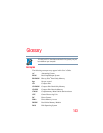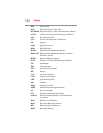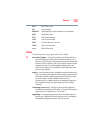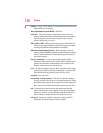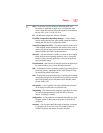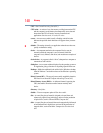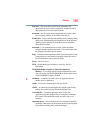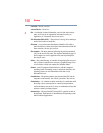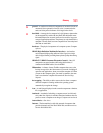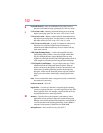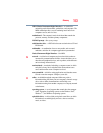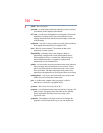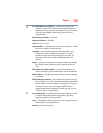
Glossary
151
G
ground—A conductor to which all components of an electric circuit are
connected. It has a potential of zero (0) volts, is connected to the
earth, and is the point of reference for voltages in the circuit.
H
hard disk—A storage device composed of a rigid platter or platters that
can be magnetically coded with data. Hard disks hold much more
information than some external media and are used for long-term
storage of applications and data. The primary (or only) hard disk in a
computer is usually fixed, but some computers have secondary hard
disks that are removable.
hardware—The physical components of a computer system. Compare
software.
HDMI (High-Definition Multimedia Interface)—An interface
used to transmit high quality audio and video signal via a single
cable in digital format, providing better picture quality than analog
signal.
HDMI-CEC (HDMI Consumer Electronics Control)—One A/V
component can control another while using this function, if
connected with HDMI cables. See also HDMI.
Hibernation—A feature of many Toshiba computers that saves to the
internal storage drive the current state of your work, including all
open files and applications, when you turn the computer off. When
you turn on the computer again, your work is returned to the same
state it was when the computer was turned off. See also Sleep,
Suspend.
hot swapping—The ability to add or remove devices from a computer
while the computer is running and have the operating system
automatically recognize the change.
I
icon—A small image displayed on the screen that represents a function,
file, or application.
interlaced—A method of refreshing a computer screen, in which only
every other line of pixels is refreshed. Interlaced monitors take two
passes to create a complete screen image. Compare non-interlaced.
internal device—See device.
Internet—The decentralized, world-wide network of computers that
provides electronic mail, the World Wide Web, and other services.
See also World Wide Web.



